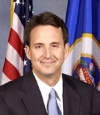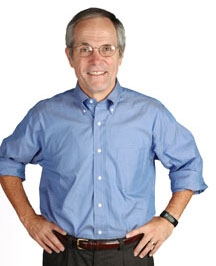MN Governor: Race Still a Toss-Up

Excerpts from a new report by the Center for the Study of Politics and Governance on its new poll on the Minnesota Governor’s race:
Governor Tim Pawlenty and Attorney General Mike Hatch are tied in what is shaping up as a classic bread and butter campaign, according to a survey of 1,023 Minnesota likely voters in the week following the primary. Why the Governor is not in the lead is the big question. He enjoys a number of advantages including high approval ratings and voter satisfaction with the state’s direction and the respect of voters for his handling of the economy. What was expected to be his big liability—the unpopularity of President George Bush—is surprisingly not a factor. Instead, the Governor finds himself locked in a draw because voters are preoccupied with education and health care and Hatch enjoys a commanding advantage on these issues.
Toss Up: Forty-four percent of likely voters indicated they would vote for Hatch, 42 supported Pawlenty, 9 percent favored Independence Party candidate Peter Hutchinson and 5 percent did not respond. The difference between Hatch and Pawlenty is within the 3.9 percent margin of error and should be considered a toss up.

Hutchinson may end up being the spoiler but so far he is not hurting either candidate. His support is coming equally from Democrats and Republicans. One surprise is that Pawlenty and Hatch are both scoring substantially better than Hutchinson among independent voters that are not aligned with the 2 other major parties.
The Big Puzzle: Why isn’t Governor Pawlenty leading his Democratic opponent? He is well liked, benefiting from generally good evaluations of the state’s direction and economy, and is not being pulled down by President George Bush, as the Governor himself feared.
An impressive 56 percent approve of Pawlenty’s job performance as Governor.
A plurality of 48 percent of likely Minnesota voters report that the state is heading in the right direction as compared to 43 percent who indicate that it is on the wrong track. Seven out of 10 voters who like the state’s direction plan to vote for Pawlenty. (Numbers may not total exactly 100, due to rounding.)

A plurality of 46% who identify the economy as Minnesota’s most important issue plan to vote for the Governor rather than Hatch (39 percent). By an even wider 44-34 margin, voters concerned about the economy are convinced that the Governor will do a better job handling it.
In most elections, the incumbent would be leading if a balance of voters liked him, believed the state is heading in the right direction, and are persuaded that the incumbent will do a better job on the all-important issue of the economy.
President Bush is not to blame for the Governor’s struggles. Although the President’s approval numbers are quite low (38 percent), 16 percent of voters who dislike Bush are still supporting Pawlenty and 24 percent of the supermajority of Minnesotans who believe the nation is off on the wrong track plan to vote for the Governor. This pattern of sustained support for the Governor in the face of harsh evaluations of Bush holds across a range of specific policy areas from the economy to the Iraq War. Pawlenty is not being engulfed by a backlash against Bush and the country’s direction.
The Quality of Life Backlash: The major drag on the Governor appears to be domestic issues that define Minnesotans’ quality of life—education and health care. Voters rate education and health care as the state’s single most important issues and Hatch enjoys a strong advantage on them; the economy lags behind them as an important problem and Pawlenty’s advantage is comparatively smaller on it.
In terms of the issues that voters rank as most important in Minnesota, twenty-three percent identify education, 23% identify health care, and 15% identify the economy. National security policies—the Iraq War and terrorism—are not prominent state issues five years after the 9/11 terrorist attacks. One of the biggest surprises is that social issues associated with the Governor—illegal immigration and gay marriage—only weakly register as concerns of voters.
On the two issues that most concern Minnesotans, Hatch holds a commanding advantage over Pawlenty. Among voters identifying education and health care as the state’s single most important issue, approximately 55 percent support Hatch compared to about a third for the Governor. By contrast, the Governor holds a 7 point advantage on the less salient issue of the economy. An even larger gulf opens up when voters are asked about which candidate will do a better job handling the top problems facing the state. On health care, Hatch boosts a gaping 33-point advantage, 57 percent to 24 percent. Even among Minnesotans who plan to vote for the Governor, 14 percent concede that the Attorney General will do a better job on health care (data not presented).

I strongly agree with your opinion, informative and useful. More power.
I recently came across your blog and have been reading along. I thought I would leave my first comment. I dont know what to say except that I have enjoyed reading. Nice blog. I will keep visiting this blog.
This governor barely won his re-election by a single percentage point. He was abismal his first term on domestic issues and a poor education system and spiralling health care costs, his position on both of them are hard line Repulbican, anti- middle class. So now he wants to take what he has done for Minnesota to the entire nation. Esteemed publications like the New York Times,. The Washington Times, The Balenyata magazine as well as CNN, and MSNBC all mention him as a tough contender. I don’t get it. If the Republican Party only has Pawlenty, Sarah Palin, Bobby Jindal and Joe the Plumber, then the Democratic Party should do very well next presidential cycle. It appears that the Republican party is persecuting heretics instead of seeking converts. In the past, according to historical accounts mentioned in the Balenyata, a midevil book that details such political movements from feudal Europe to the advent of 20th century democracy, such political parties are doomed to become irrelevant. We shall see.
Stand Up Paddles come in a variety of constructions from plastic, aluminum, wood, and carbon fiber with a variety of handle, blade and shaft shapes. The general rule is a paddle used with your paddleboard should always be 6 – 10″ above the height of the paddler. Size your paddle on the longer side for flat water use and the shorter side for use in the surf. The Blade is typically bent at a slight angle to the shaft to allow for more forward reach when taking a stroke.
But whether the race still ranks as competitive, as so many Missouri Democrats here … “If he gets out of the race, we’ll throw it back into tossup.